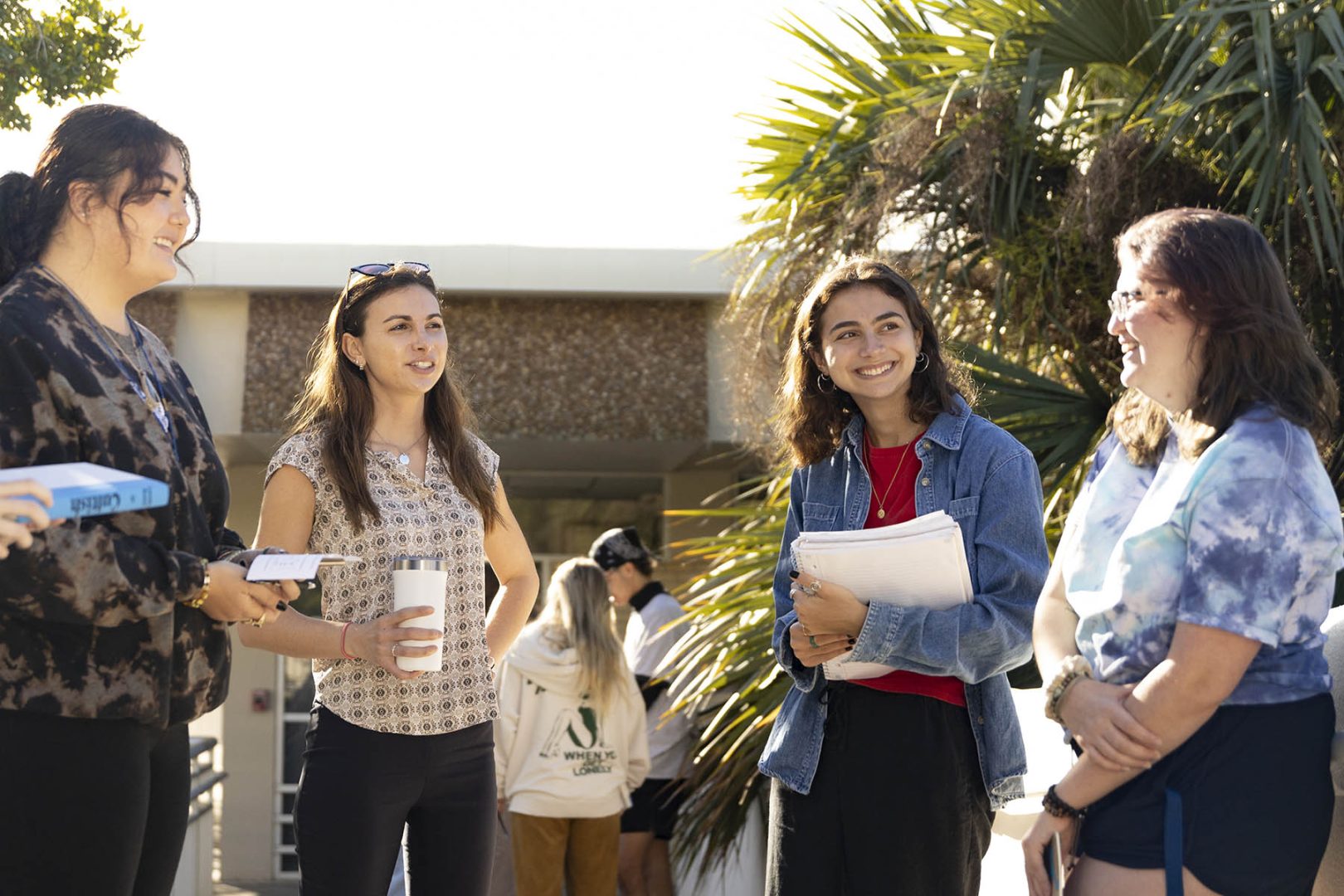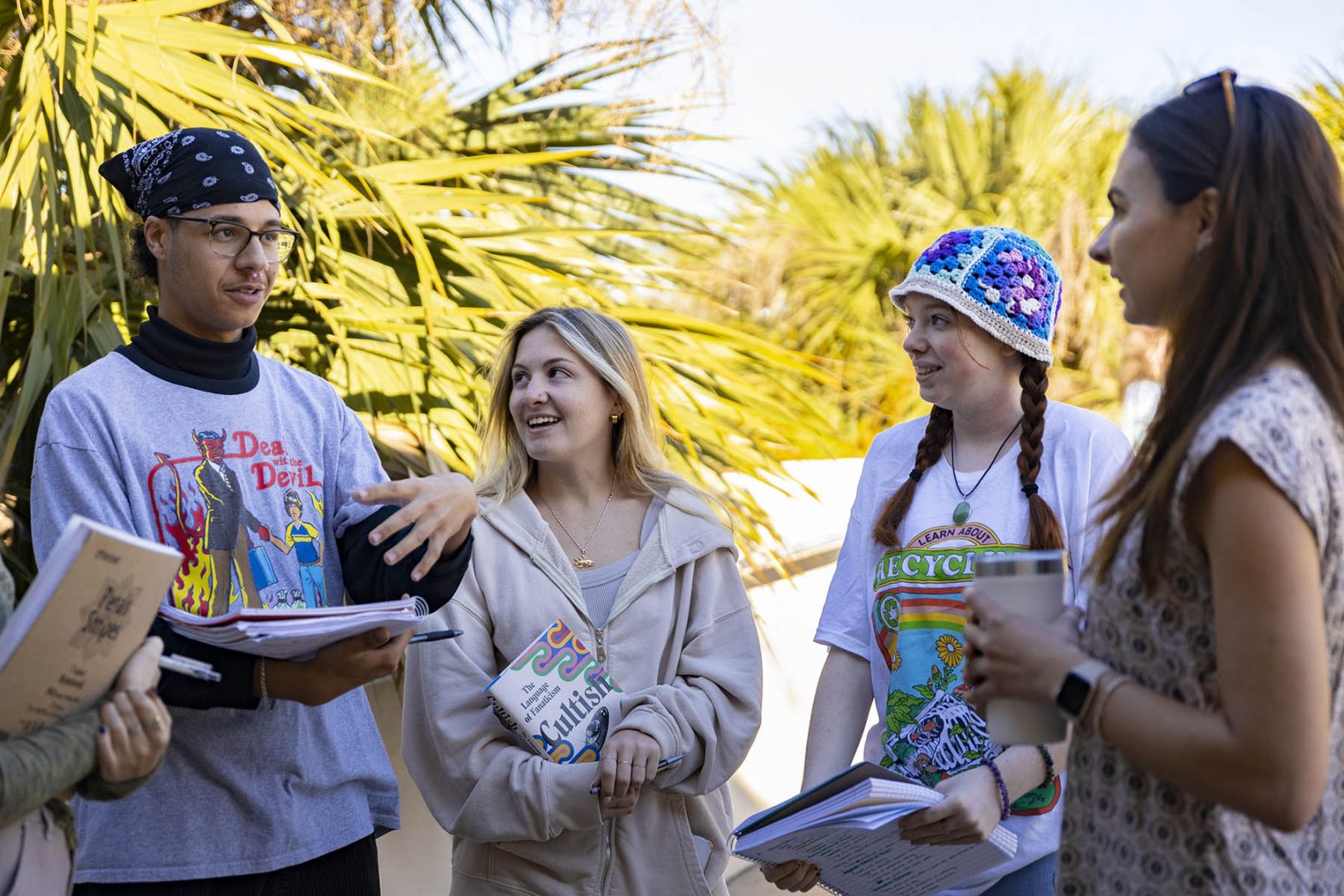Stephanie Mallinas’s The Psychology of Cults class divides into groups of four or five students to discuss why people became followers of such notorious figures as David Koresh of the Branch Davidians, Jim Jones of the Peoples Temple, and Charles Manson and his Manson Family.
The students bring up concepts such as validation, a sense of belonging and what actually defines a cult.
And then someone mentions Mary Kay Inc., a $3 billion multilevel marketing company known for its cosmetics. “Well,” says one student, “in some ways it fits.”
Why do people join cults? How do cult leaders attract members? Are some people more susceptible to cult influence than others? What exactly makes a group a cult? All of these questions are at the center of The Psychology of Cults, an inaugural Eckerd College Winter Term course taught by Assistant Professor of Psychology Stephanie Mallinas, Ph.D. The College offered more than 60 Winter Term courses this year, nearly half of them abroad, from Jan. 3–27.
“When I teach Social Psychology, we talk about social influence and group processes,” Mallinas explains. “Last spring the students did a little activity applying these concepts to cults. They really enjoyed it. I knew I needed to come up with a Winter Term course that was a little nontraditional, and I thought there would be a lot to talk about in a class on cults.”
There is.
“I’m interested in the mysterious, dark things in our world, things we have negative perceptions of,” says John Ormsby, a junior environmental studies student from Chandler, Arizona, who is taking Mallinas’s class. “I took Religion, Magic and Occultism last year and was just fascinated by it. And this class has taught me that there’s so much more to what we think a cult is. We usually only see the drama or destruction, but some cults are passive and peaceful and made up of people who are just looking for other people to look up to and guidance in their life.
“I also learned that the language involved is important. We have abstract words we just throw out that can confuse the public, so that what is considered to be a cult can get very jumbled. Alcoholics Anonymous, WeightWatchers, the Boy Scouts and Girl Scouts … they can all be considered a cult by some definitions.”

Left to right: Emma Nguyen ’25, Assistant Professor Stephanie Mallinas, Ella Glass ’23, Jade Gilchrist-Brock ’23
Webster’s Dictionary defines cult as “a religion regarded as unorthodox or spurious” or “a great devotion to a person, idea, object, movement or work.” And cult comes from the Latin word cultus, a noun with meanings ranging from tilling and cultivation, to training or education, to adoration.
“One thing I want the students to realize is that although we think of cults as extreme things, that might not always be the case,” Mallinas says. “The idea that only fanatics join cults doesn’t hold because most people are susceptible to group influence. And there is no real agreement on what the definition of a cult is, so we talk about that … what they [the students] think a cult is, what its characteristics are. We created a spectrum of groups, and we constantly update the list.”
And the discussions remain lively. “I want to expand my perception on life and keep an open mind,” John adds. “Cults are just an interesting topic that not a lot of people talk about. I love bringing it up to people and having a conversation about it. I might realize that I never thought about something before, which furthers my knowledge even more.”













